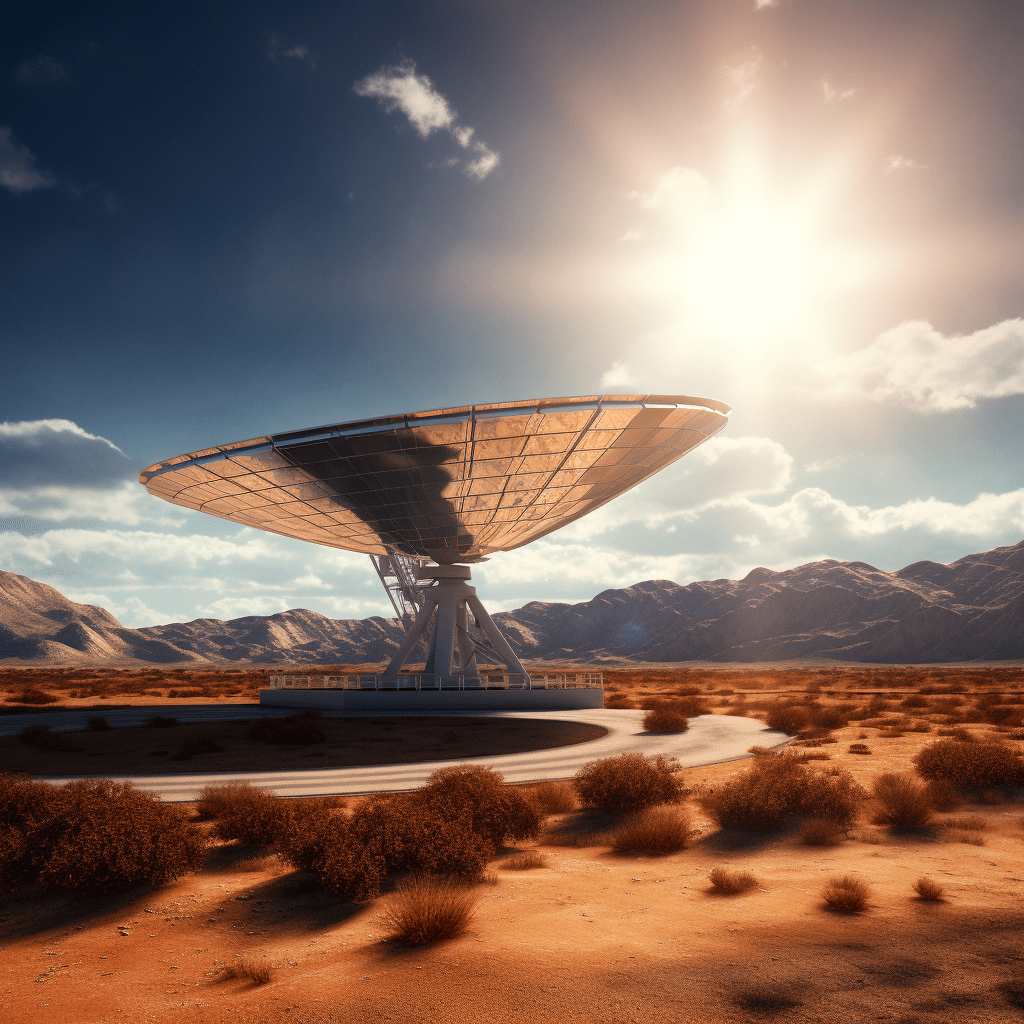Stirling dish solar energy is gaining traction as a sustainable solution for tech industries, offering a highly efficient method of harnessing solar power. This technology utilizes parabolic dishes to concentrate sunlight onto a receiver, generating heat that drives a Stirling engine to produce electricity, thereby revolutionizing energy consumption in various sectors.
What is Stirling dish solar energy and its significance?
Stirling dish solar energy refers to a concentrated solar power (CSP) technology that uses parabolic mirrors to focus sunlight onto a receiver, where it heats a working fluid, typically helium or hydrogen, to drive a Stirling engine. This method is significant because it achieves higher efficiencies than traditional photovoltaic systems, making it an attractive option for large-scale energy production.
Chart: Overview of Stirling Dish Solar Energy
| Feature | Description |
|---|---|
| Technology Type | Concentrated Solar Power (CSP) |
| Efficiency | Up to 30% |
| Primary Components | Parabolic dish, receiver, Stirling engine |
How does Stirling dish technology operate?
The operation of Stirling dish technology involves several key steps:
- Sunlight Concentration: The parabolic dish collects and focuses sunlight onto a receiver.
- Heat Generation: The concentrated sunlight heats the working fluid in the receiver.
- Power Generation: The heated fluid expands and drives the pistons in the Stirling engine, converting thermal energy into mechanical work.
- Electricity Production: The mechanical work turns a generator, producing electricity.
Chart: Operational Process of Stirling Dish Technology
| Step | Description |
|---|---|
| 1. Sunlight Concentration | Sunlight focused by parabolic mirrors |
| 2. Heat Generation | Receiver heats working fluid |
| 3. Power Generation | Heated fluid drives pistons |
| 4. Electricity Production | Generator converts mechanical work to electricity |
What benefits do Stirling dish solar systems offer?
Stirling dish solar systems provide numerous advantages:
- High Efficiency: They can achieve higher efficiency rates compared to traditional PV panels due to their ability to concentrate sunlight.
- Energy Storage Capability: With advancements in thermal storage, these systems can store heat for later use, providing power even when sunlight is not available.
- Reduced Land Footprint: Their modular design allows for efficient land use compared to other large-scale solar installations.
Chart: Benefits of Stirling Dish Solar Systems
| Benefit | Description |
|---|---|
| High Efficiency | Achieves up to 30% efficiency |
| Energy Storage | Capable of thermal storage |
| Land Use Efficiency | Modular design minimizes land requirements |
How is this technology being implemented in tech industries?
Tech industries are increasingly adopting Stirling dish solar energy as part of their sustainability initiatives:
- Data Centers: Companies are utilizing this technology to power data centers with renewable energy, reducing their carbon footprint.
- Manufacturing Facilities: Some manufacturers are integrating Stirling systems to offset their energy consumption and enhance operational sustainability.
- Research Institutions: Universities and research organizations are exploring the potential of this technology for experimental applications and innovations.
Chart: Adoption of Stirling Dish Solar in Tech Industries
| Sector | Application |
|---|---|
| Data Centers | Renewable power supply |
| Manufacturing | Energy offsetting |
| Research Institutions | Experimental applications |
What challenges must be overcome for wider adoption of Stirling dish technology?
Despite its advantages, several challenges hinder the widespread adoption of Stirling dish solar technology:
- High Initial Costs: The upfront investment required for installation can be significant compared to other renewable technologies.
- Complexity of Installation: The installation process can be more complex due to the need for precise alignment and tracking systems.
- Market Competition: Competition from rapidly decreasing costs of photovoltaic systems can limit market share.
Chart: Challenges Facing Adoption
| Challenge | Description |
|---|---|
| High Initial Costs | Significant upfront investment required |
| Installation Complexity | More complex setup compared to PV systems |
| Market Competition | Pressure from lower-cost alternatives |
What does the future hold for Stirling dish solar energy solutions?
The future outlook for Stirling dish solar energy appears promising as technological advancements continue to improve efficiency and reduce costs. Increased interest from both private and public sectors in sustainable energy solutions will likely drive further research and development, potentially leading to broader adoption across various industries.
Chart: Future Trends in Stirling Dish Solar Energy
| Trend | Description |
|---|---|
| Technological Advancements | Innovations improving efficiency |
| Increased Investment | Growing funding from government and private sectors |
Latest News
Recent reports highlight the rising interest in Stirling dish solar energy as companies seek sustainable solutions amid climate change concerns. With advancements in efficiency and storage capabilities, this technology is becoming increasingly viable for large-scale applications, particularly within tech industries looking to enhance their renewable energy portfolios.
Editor Comment
“The growing popularity of Stirling dish solar energy represents a significant step forward in our quest for sustainable solutions in the tech industry. By harnessing the sun’s power more efficiently, we can reduce our reliance on fossil fuels while paving the way for innovative technologies that support a greener future.”
FAQ Section
Q1: What is a Stirling dish solar system?
A1: A Stirling dish solar system uses parabolic mirrors to concentrate sunlight onto a receiver that heats a working fluid, which then drives a Stirling engine to generate electricity.Q2: How efficient are Stirling dish systems compared to traditional PV panels?
A2: Stirling dish systems can achieve efficiencies up to 30%, which is higher than most traditional photovoltaic panels.Q3: What are some challenges facing the adoption of Stirling dish technology?
A3: Challenges include high initial costs, installation complexity, and competition from lower-cost photovoltaic systems.



